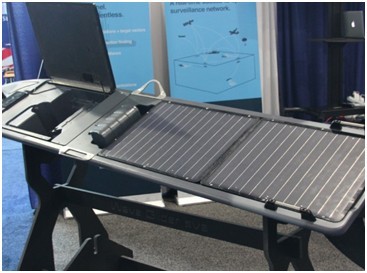Wave Glider SV3
USINFO | 2013-10-09 11:14

Liquid Robotics' expertise is wave-powered robotic platforms -- that is, seafaring robots that propel themselves across the ocean by converting energy harvested from the ocean's own waves into propulsion. Their self-sufficient Wave Glider Surface Vehicle 2 set a world record for an ocean crossing by an autonomous watercraft last year when it arrived in Brisbane, Australia, after completing a trans-Pacific crossing that began 9,000 nautical miles away in San Francisco and took just over a year.
But Liquid Robotics isn't in it for the distance records. Its new SV3 platform is about two feet longer than the SV2 that crossed the Pacific and is now wired up to accommodate something like four times more hardware like sensor payloads, computing resources, or batteries for energy storage. The company's SHARC (that's Sensor Hosting Autonomous Remote Craft) is a version of the aforementioned technology trimmed down and customized for the U.S. Navy. With a limitless power source provided by the ocean itself and no radar or acoustic signature to give it away, the Navy can basically drop its SHARCs in the middle of the ocean and leave them out there for months at a time. If a boat or submarine comes within range of its sensors it can tip off nearby vessels via satellite link.
Share this page